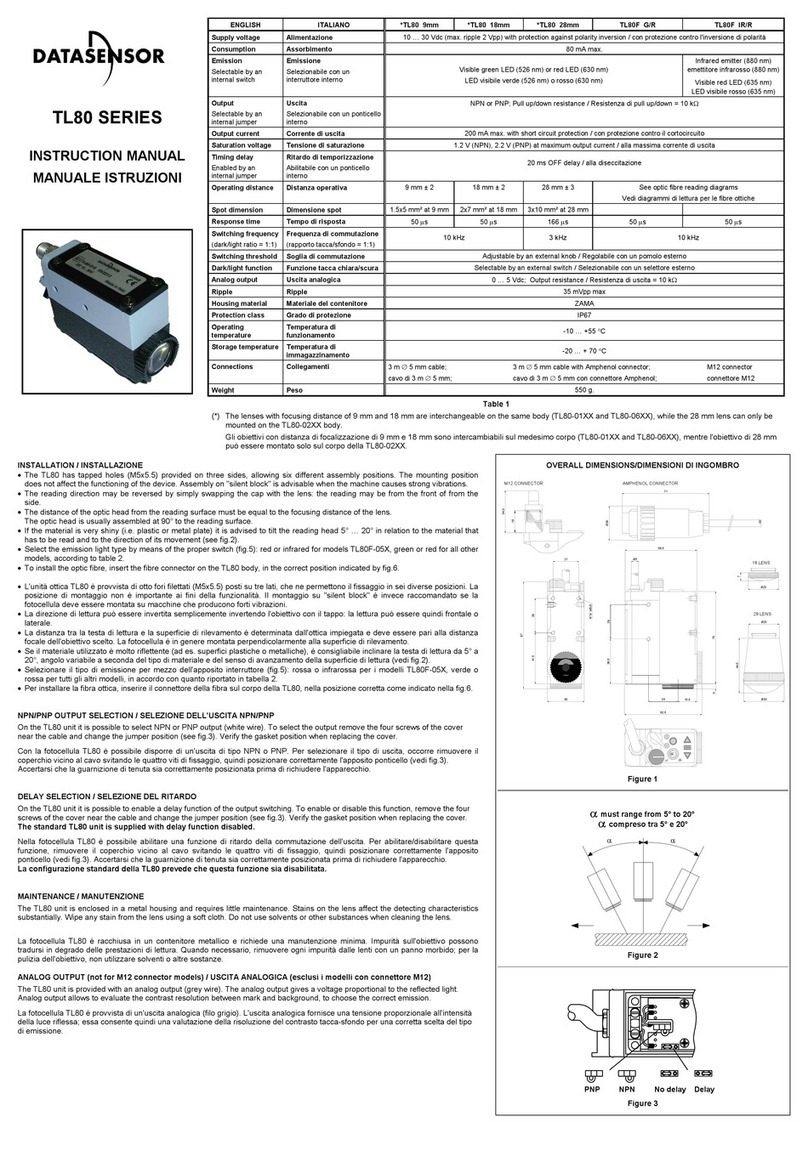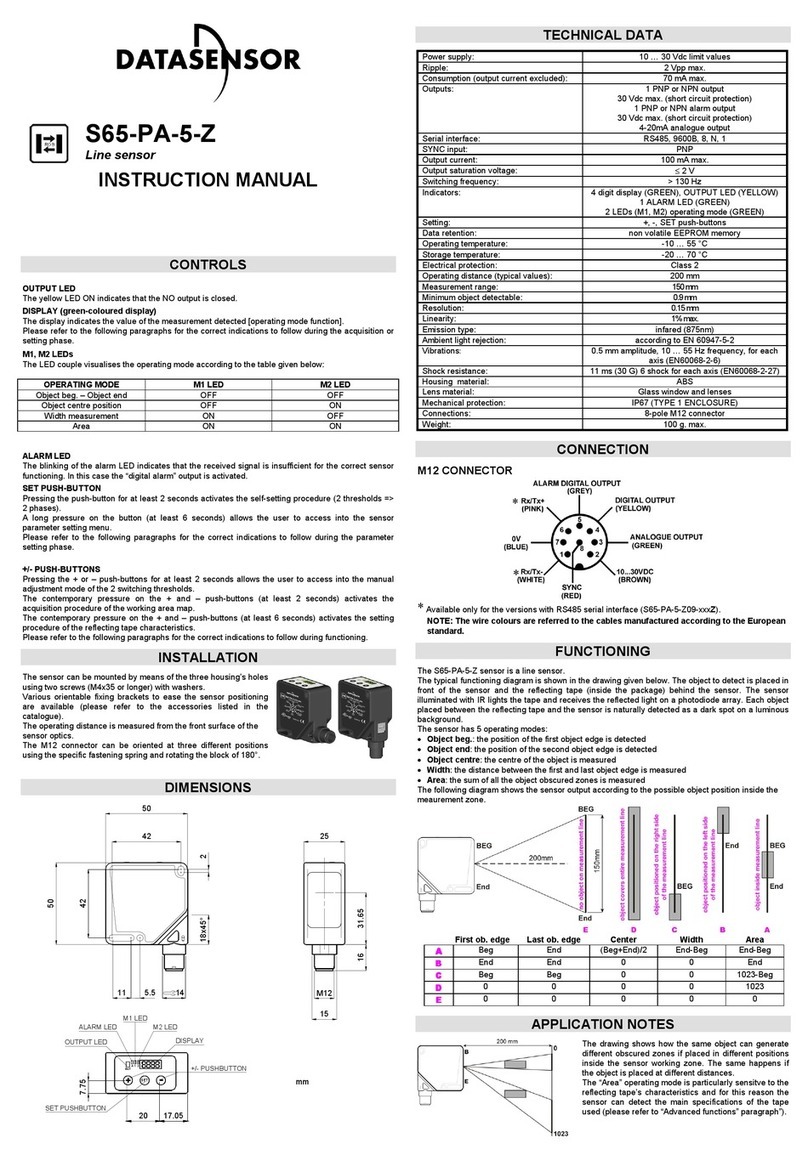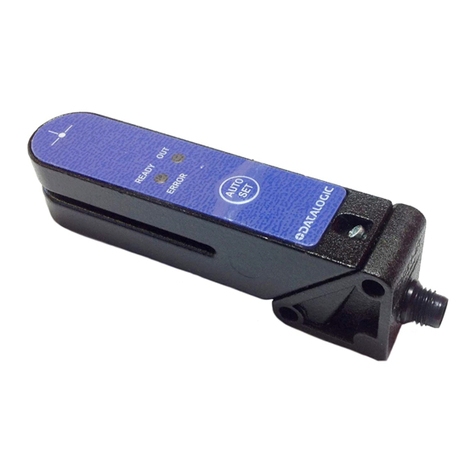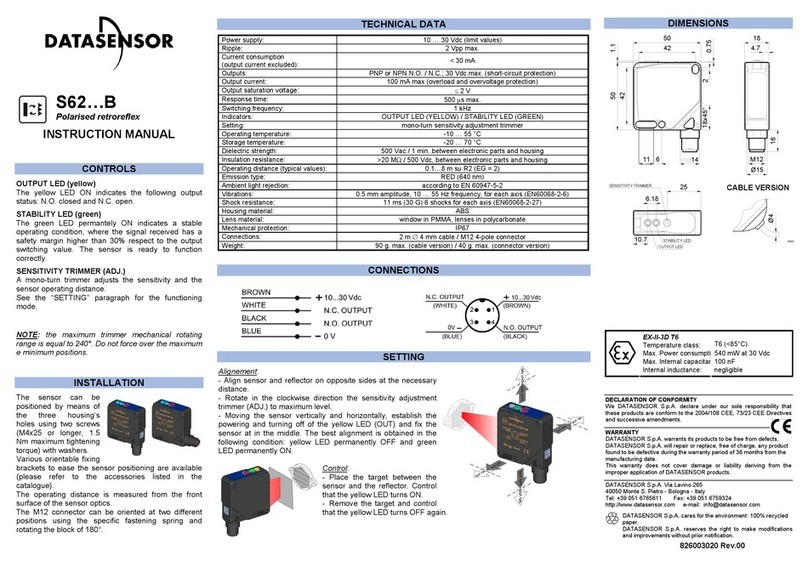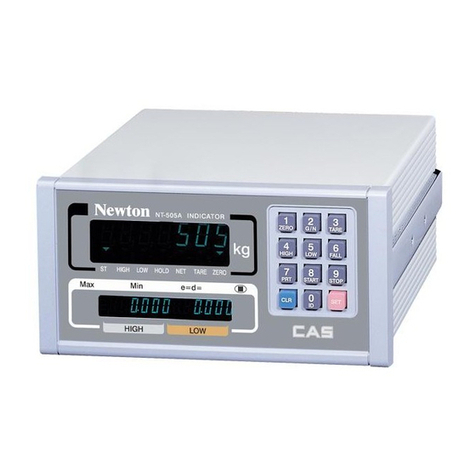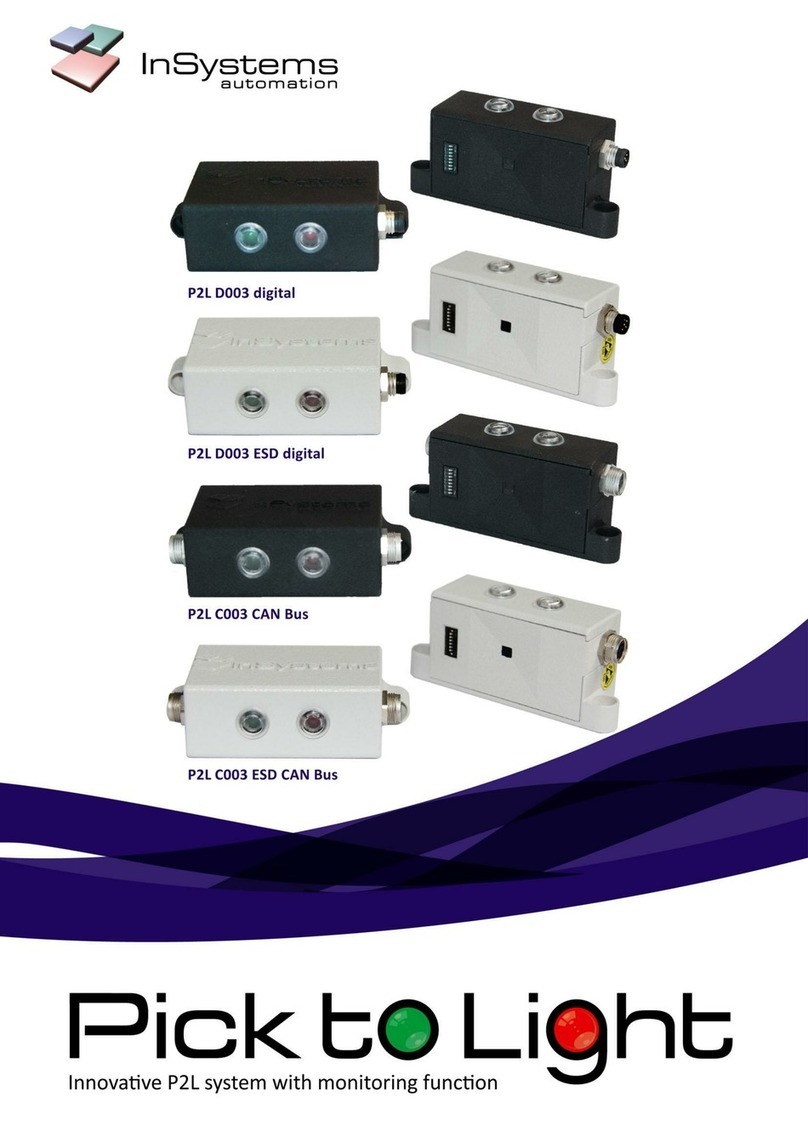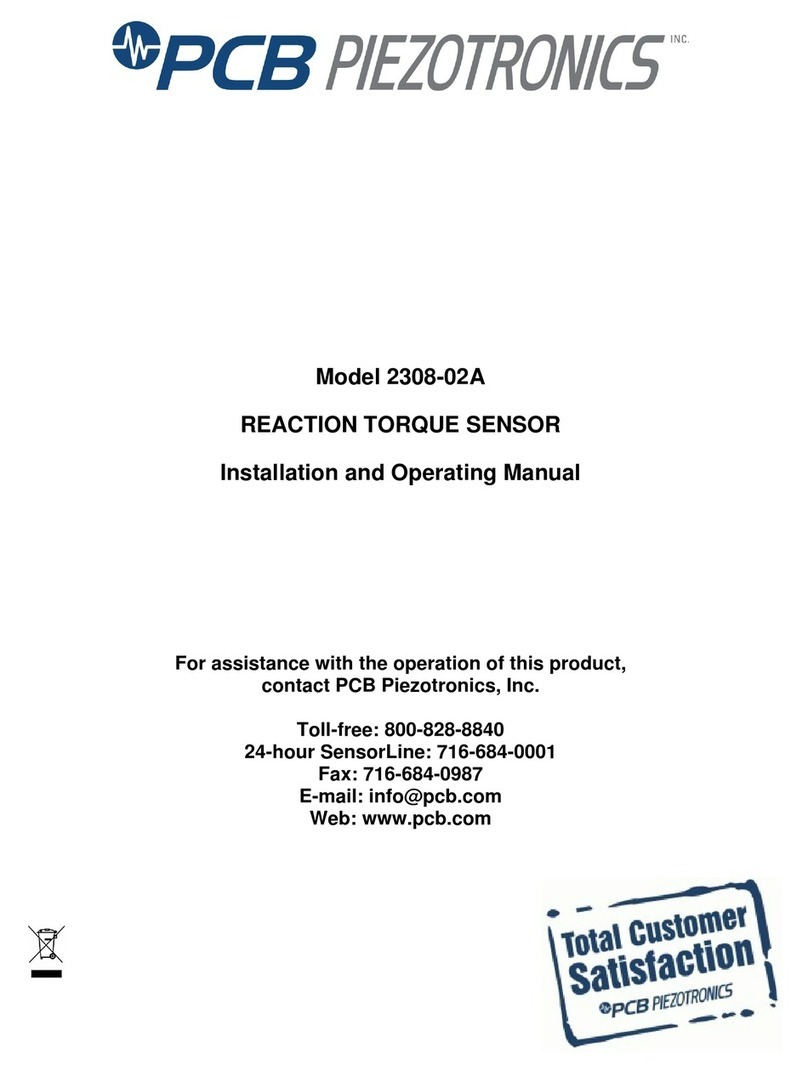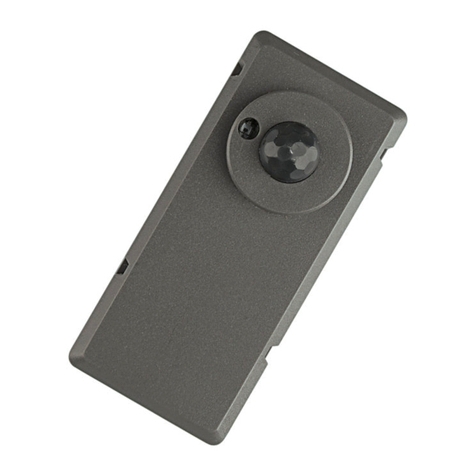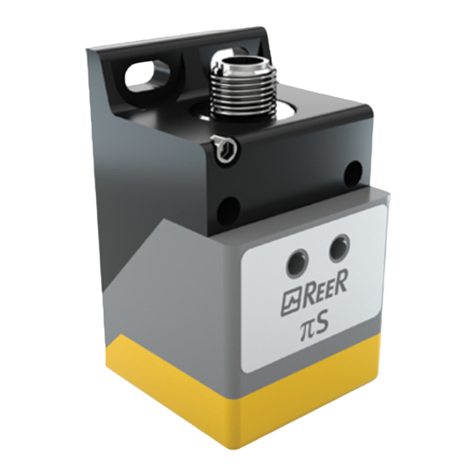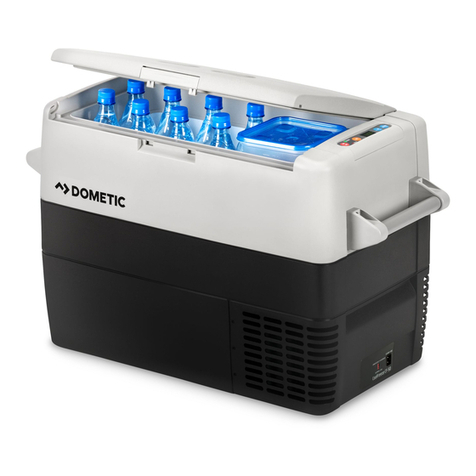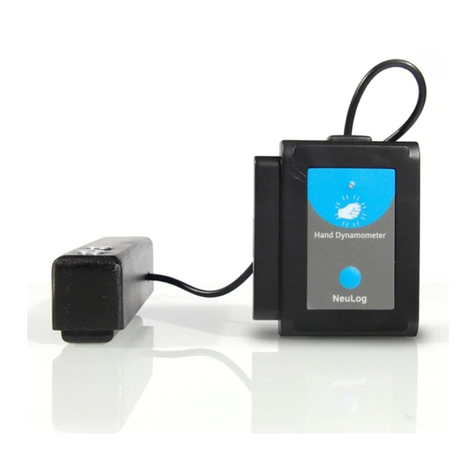Datasensor TL46-W User manual

TL46-W
Contrast sensor
INSTRUCTION MANUAL
CONTROLS
OUT LED (yellow)
The red LED indicates the output status.
READY LED (green)
During functioning, the green LED permanently ON
indicates a normal operating condition; fast blinking
indicates an output overload condition.
PUSH-BUTTON (white)
The detection procedure is activated by pressing white push-button.
See the “SETTING” paragraph for setup procedure indications.
INSTALLATION
The sensor can be positioned by means the two Ø3.5mm housing’s holes
using or threaded M5 holes with 6mm max. depth.
Warning: the use of excessively long screws can damage the product.
The connector can be oriented at five different positions, rotating the block.
The position chosen is guaranteed by a mechanical blocking system.
The rotation can be carried-out even after sensor installation as the connector
block is completely self-contained inside the housing.
The operating distance is measured starting from the lens front face.
The reading direction can be changed inverting the cap and lens.
Mark detection on a reflective surface is improved adjusting the beam
direction to 5° … 20° from surface axis.
DIMENSIONS
40
31.9
Ø25
24
60.7
44.7
4
39.1
15.8
15.5
28
2827.5
81.5
5.5
M12x1 21
5
TECHNICAL DATA
Power supply: 10…30 Vdc limit values
Ripple: 2 Vpp max.
Current consumption
(output current excluded): 50 mA max. @ 24Vcc
Output: 1 PNP/NPN selectable output
30 Vdc max. (short-circuit protection)
(PNP is the default configuration)
Output current: 100 mA max.
Output saturation voltage: ≤2 V
Response time: 33 μs
Switching frequency: 15 kHz
Analogue output: 1 … 3 V ± 10% (white 90%); 5.5 V max;
Analogue output
impedance: 2.2 kΩ
(short-circuit protection)
Delay: 0 / 20 ms
selectable via delay input
Dark/light selection automatic
Indicators: OUT LED (yellow) / READY LED (green)
Operating temperature: -10 … 55 °C
Storage temperature: -20 … 70 °C
Electric shock protection: double insulation
Operating distance: 9 mm
Depth of field: ±3 mm
Minimum spot dimension: 1.5x5mm
Emission type: blue (465 nm) / green (520 nm) / red (630 nm)
with automatic selection
Ambient light rejection: according to EN 60947-5-2
Vibrations: 0.5 mm amplitude, 10 … 55 Hz frequency, for
each axis (EN60068-2-6)
Shock resistance: 11 ms (30 G) 6 shock for each axis
(EN60068-2-27)
Housing material: aluminium
Lens material: PMMA
Mechanical protection: IP67
Connections: M12 5-pole connector
Weight: 170 g. max.
CONNECTIONS
SETTING
DETECTION (MARK-BACKGROUND)
-Position mark in front of the sensor light spot and press white push-
button until the READY LED (green) turns OFF.
The sensor detects the mark alternating the red, green and blue emissions.
Avoid mark movements during this phase.
-Position the background in front of the sensor light spot and press white
push-button again. The sensor detects the mark alternating the red, green
and blue emissions. Avoid background movements during this phase.
The DARK/LIGHT operating mode is automatically selected by the sensor.
Dark mark - light background = dark mode; light mark - dark background =
light mode.
If the READY LED is permanently ON, the detection is successful.
If the LED blinks slowly, the detection has failed due to insufficient contrast.
The sensor returns to the previous setting by pressing white push-button.
Repeat the procedure from the beginning.
PNP/NPN OUTPUT SETTING
The digital output can be PNP or NPN configured.
- To change output press white push-button for 10 sec.
- The setting is signalled by the status change of the READY LED.
If the READY LED turns off after a 1 sec. pressure, release push-button
only after the re-powering of the LED (10sec).
-The output setting is signalled by the READY LED. Releasing the push-
button, the READY LED blinks once if the PNP output is set, blinks twice if
the NPN output is set.
s1 sec
pressure of
s10 sec
pressure of Release of
push-buttons
OUTPUT OVERLOAD
The digital output overload is signalled by the rapid blinking of the READY
LED.
ACCESSORY FUNCTIONS
ANALOGUE output
The analogue output supplies a voltage proportional to the signal received by
the sensor. The voltage supplied is 1 ÷ 5.5V.
The maximum voltage is obtained with reflective objects; on 90% white the
voltage is equal to 3V.
DELAY SETTING
The DELAY extends to 20ms the minimum duration of the active output
allowing the slower interfacing systems to detect shorter pulses.
Delay activation
-Connect Delay signal (grey wire) to power supply.
Delay deactivation
- Connect Delay signal (grey wire) to 0V or leave unconnected.
EX-II-3DG IP67 T6
Temperature class:
T6 (<85°C)
Max. Power consumption 1500 mW at 30 Vdc
Max. Internal capacitanc
e
450 pF
Internal inductance: negligible
DECLARATION OF CONFORMITY
We DATASENSOR S.p.A. declare under our sole responsibility that these products are conform to the
2004/108/CE, 2006/95/CE Directives and successive amendments.
WARRANTY
DATASENSOR S.p.A. warrants its products to be free from defects.
DATASENSOR S.p.A. will repair or replace, free of charge, any product found to be defective during the
warranty period of 36 months from the manufacturing date.
This warranty does not cover damage or liability deriving from the improper application of
DATASENSOR products.
DATASENSOR S.p.A. Via Lavino 265
40050 Monte S. Pietro - Bologna - Italy
Tel: +39 051 6765611 Fax: +39 051 6759324
DATASENSOR S.p.A. cares for the environment: 100% recycled paper.
DATASENSOR S.p.A. reserves the right to make modifications and improvements without
prior notification. 826003062 Rev.D
ON
OUT with DELAY OFF 20ms 20ms
ON
OUT without DELAY
OFF
CTi Automation - Phone: 800.894.0412 - Fax: 208.368.0415 - Web: www.ctiautomation.net - Email: [email protected]

TL46-WL
Contrast sensor
INSTRUCTION MANUAL
CONTROLS
OUT LED (yellow)
The yellow LED indicates the output status.
READY LED (green)
During functioning, the green LED permanently ON
indicates a normal operating condition.
Fast blinking indicates an output overload condition.
DELAY LED (orange)
The orange DELAY LED ON indicates the timing
function activation on the digital output.
KEYLOCK LED (orange)
The orange KEYLOCK LED ON indicates the active keyboard status.
BARGRAPH
The switching threshold level is signalled on the bargraph.
PUSH-BUTTON (bianco)
The detection procedure is activated by pressing the push-button.
(red) and (green) PUSH-BUTTONS
The threshold adjustment procedure is activated by pressing the and
push-buttons.
See the “SETTING” paragraph for the correct adjustment phase
indications.
INSTALLATION
The sensor can be positioned by means the two Ø3.5mm housing’s holes
using or threaded M5 holes with 6mm max. depth.
Warning: the use of excessively long screws can damage the product.
The connector can be oriented at five different positions, rotating the block.
The position chosen is guaranteed by a mechanical blocking system.
The rotation can be carried-out even after sensor installation as the connector
block is completely self-contained inside the housing.
The operating distance is measured starting from the lens front face.
The reading direction can be changed inverting the cap and lens.
Mark detection on a reflective surface is improved adjusting the beam
direction to 5° … 20° from surface axis.
DIMENSIONS
40
31.9
Ø25
24
60.7
44.74
39.1
15.8
15.5
28
2827.5
81.5
4.8
M12x1 21
5
TECHNICAL DATA
Power supply: 10…30 Vdc (limit values)
Ripple: 2 Vpp max.
Current consumption
(output current excluded):
85 mA max @ 24 Vdc with bargraph ON
in threshold adjustment mode,
55 mA max @ 24 Vdc with bargraph OFF
in normal functioning mode
Output: 1 selectable PNP/NPN output
30 Vdc max. (short-circuit protection)
(default PNP configuration)
Output current: 100 mA max.
Output saturation voltage: ≤2 V
Response time: 25 μs
Switching frequency: 20 kHz
Analogue output: 1 … 3 V ± 10% (90% white); 5.5 V max.
Analogue output
impedance: 2.2 kΩ
(short-circuit protection)
Delay 0 / 20ms selectable
default configuration without delay
Dark/light selection: Automatic
Indicators: OUT LED (yellow) / READY LED (green)
DELAY LED and KEYLOCK LED (orange)
5-segment bargraph
Operating temperature: -10 … 55 °C
Storage temperature: -20 … 70 °C
Electric shock protection: double insulation
Operating distance: 9 mm
Depth of field: ±3 mm
Minimum spot dimension: 1.5x5mm
Emission type: Blue (465 nm) / Green (520 nm) / Red (630 nm)
with automatic selection
Ambient light rejection: According to EN 60947-5-2
Vibrations: 0.5 mm amplitude, 10 … 55 Hz frequency,
for each axis (EN60068-2-6)
Shock resistance: 11 ms (30 G) 6 shock for each axis
(EN60068-2-27)
Housing material: Aluminium
Lens material: Glass (*)
Mechanical protection: IP67
Connections: M12 5-pole connector
Weight: 170 g. max.
(*)It’s available on request, PMMA plastic lens with 9mm focus.
CONNECTIONS
SETTING
KEYLOCK FUNCTION (PATENT-COVERED)
The KEYLOCK function deactivates the keyboard avoiding any accidental
changes in sensor setting.
At sensor powering, the keyboard is blocked (KEYLOCK LED OFF).
The white push-button has to be pressed for 5 sec. until the KEYLOCK
LED (orange) turns ON. The keyboard is blocked automatically if not used for
2 minutes.
The keyboard has to be unlocked to proceed with sensor setting.
DETECTION (MARK-BACKGROUND)
-Position mark in front of the sensor light spot
and press white push-button until the
READY LED (green) turns OFF.
The sensor detects the mark alternating the
red, green and blue emissions; avoid mark
movements during this phase.
- Position the background in front of the
sensor light spot and press white push-
button again. The sensor detects the mark
alternating the red, green and blue
emissions. Avoid background movements
during this phase.
The DARK/LIGHT operating mode is
automatically selected by the sensor.
Dark mark - light background = dark mode;
light mark - dark background = light mode.
If the READY LED is permanently ON, the
detection is successful. If the LED blinks
slowly, the detection has failed due to
insufficient contrast. The sensor returns to the
previous setting by pressing white push-button.
Repeat the procedure from the beginning.
SWITCHING THRESHOLD SETTING
The sensor switching threshold is adjusted by pressing the or push-
buttons (respectively increasing or decreasing the value).
At the first pressure of the or push-buttons, the first three LEDs of the
bargraph turn ON.
Increasing or decreasing the threshold, the right or left LEDs blink with a
frequency proportional to the difference from the initial threshold value.
Increase / decrease Bargraph
[1..10] pressures of
[11..20] pressures of
[1..10] pressures of
[11.20] pressures of
To save the new threshold value press white push-button or wait 30 sec.
from last change (automatic save).
DELAY SETTING
The DELAY extends to 20ms the minimum duration of the active output
allowing the slower interfacing systems to detect shorter pulses.
The active delay is signalled by the corresponding orange LED ON.
DELAY ACTIVATION
-Press and contemporaneously for 2
sec. until the DELAY LED turns ON.
DELAY DEACTIVATION
-Press and contemporaneously for 2
sec. until the DELAY LED turns OFF.
PNP/NPN OUTPUT SETTING
The digital output can be PNP or NPN
configured.
-To change output press red push-button and green push-button
contemporaneously for 10 sec.
-The setting is signalled by the status change of the DELAY LED.
If the delay is active after pressing the push-buttons for 2 seconds, the
DELAY LED turns OFF, release the push-buttons only after LED re-
powering (10 sec.).
If the delay is deactivated after pressing the push-buttons for 2 seconds, the
DELAY LED turns ON, release the push-buttons only after LED turning off
(10sec.).
-The output setting is signalled by the KEYLOCK LED. Releasing the push-
buttons, the KEYLOCK LED blinks once if the PNP output is set, blinks
twice if the NPN output is set.
s2 sec. pressure of
and
s10 sec. pressure of
and
Release of push-
buttons
Delay ON
Delay OFF
OUTPUT OVERLOAD
The digital output overload is signalled by the rapid blinking of the READY
LED.
ACCESSORY FUNCTIONS
REMOTE INPUT
The REMOTE signals carries-out the acquisition functions without using the
white push-button.
The REMOTE wire connected to +Vdc is equal to pressing the white
push-button. Whereas, if the REMOTE wire is connected to GND or not
connected it is equal to not pressing the white push-button.
ANALOGUE OUTPUT
The analogue output supplies a voltage proportional to the signal received by
the sensor. The voltage supplied is 1 ÷ 5.5V. The maximum voltage is
obtained with reflective objects; on 90% white the voltage is equal to 3V.
EX-II-3DG IP67 T6
Temperature class:
T6 (<85°C)
Max. Power consumption: 2400 mW at 30 Vdc
Max. Internal capacitance: 450 pF
Internal inductance: negligible
DECLARATION OF CONFORMITY
We DATASENSOR S.p.A. declare under our sole responsibility that these products are conform to the
2004/108/CE, 2006/95/CE Directives and successive amendments.
WARRANTY
DATASENSOR S.p.A. warrants its products to be free from defects.
DATASENSOR S.p.A. will repair or replace, free of charge, any product found to be defective during the
warranty period of 36 months from the manufacturing date.
This warranty does not cover damage or liability deriving from the improper application of
DATASENSOR products.
DATASENSOR S.p.A. Via Lavino 265
40050 Monte S. Pietro - Bologna - Italy
Tel: +39 051 6765611 Fax: +39 051 6759324
DATASENSOR S.p.A. cares for the environment: 100% recycled paper.
DATASENSOR S.p.A. reserves the right to make modifications and improvements without
prior notification. 826003003 Rev.E
ON
OUT with DELAY OFF 20ms 20ms
ON
OUT without DELAY
OFF
STATIC
DET.
Mark acquisition
VDC
REMOTE
GND
>
1s
BKGD acquisition
CTi Automation - Phone: 800.894.0412 - Fax: 208.368.0415 - Web: www.ctiautomation.net - Email: [email protected]

TL46-WLF
Contrast sensor
INSTRUCTION MANUAL
CONTROLS
OUT LED (yellow)
The yellow LED indicates the output status.
DISPLAY (green 4-digit display)
During normal functioning, the display indicates a value
relative to the light quantity diffused by the target.
READY LED (RDY)
The green READY LED ON indicates a normal operating
condition where the received signal has a safety margin
respect to the output switching value: stability condition.
DELAY LED
The green DELAY LED ON indicates the timing activation on the digital
output.
KEYLOCK LED
The green KEYLOCK LED ON indicates the active keyboard status.
(white), (red), and (green) PUSH-BUTTONS
See the “SETTING” paragraph for the correct adjustment phase indications.
INSTALLATION
The sensor can be positioned by means the two Ø3.5mm housing’s holes
using or threaded M5 holes with 6mm max. depth.
Warning: the use of excessively long screws can damage the product.
The connector can be oriented at five different positions by rotating the block.
The position chosen is guaranteed by a mechanical blocking system.
The rotation can be carried-out even after sensor installation as the connector
block is completely self-contained inside the housing.
The operating distance is measured starting from
the lens front face.
The reading direction can be changed inverting
the cap and lens.
Mark detection on a reflective surface is
improved adjusting the beam direction to 5° …
20° from surface axis.
CONNECTIONS
DIMENSIONS
M12x1
81.5
4.8
21
5
4
40
31.9
Ø25
24
60.7
44.7
39.1
15.8 2827.5
15.5
28
TECHNICAL DATA
Power supply: 10…30 Vdc limit values
Ripple: 2 Vpp max.
Current consumption
(output current excluded): 35 mA max. @ 24 Vdc
Output: 1 selectable PNP/NPN output
30 Vdc max. (short-circuit protection)
default PNP configuration
Output current: 100 mA max.
Output saturation voltage: ≤2 V
Response time: 16 μs
Switching frequency: 30 kHz
Indicators: 4-digit display (GREEN) / OUT LED (YELLOW) /
READY LED (GREEN) / DELAY LED (GREEN) /
KEYLOCK LED (GREEN)
Push-buttons: push-buttons : -, SET, +
Delay 0…100 ms programmed
default configuration without delay
Dark/light selection: Automatic in the target/background detection
selectable via wire in the dynamic detection
Operating temperature: -10 … 55 °C
Storage temperature: -20 … 70 °C
Electric shock protection: double insulation
Operating distance: 9 mm
Depth of field: ±3 mm
Minimum spot dimension: 1.5x5mm
Emission type: blue ( 465 nm) / green (520 nm) / red (630 nm)
with automatic selection
Ambient light rejection: according to EN 60947-5-2
Vibrations: 0.5 mm amplitude, 10 … 55 Hz frequency,
for each axis (EN60068-2-6)
Shock resistance: 11 ms (30 G) 6 shocks for each axis (EN60068-2-27)
Housing material: Aluminium
Lens material: Glass (*)
Mechanical protection: IP67
Connections: M12 5-pole connector
Weight: 170 g. max.
(*)It’s available on request, PMMA plastic lens with 9mm focus.
SETTING
KEYLOCK FUNCTION (PATENT-COVERED)
The KEYLOCK function deactivates the keyboard avoiding any accidental
changes in sensor setting.
At sensor powering, the keyboard is blocked (KEYLOCK LED OFF).
The push-button has to be pressed for 5 sec. until the KEYLOCK LED
turns ON. The keyboard is blocked automatically if not used for 2 minutes.
The keyboard has to be unlocked to proceed with sensor setting.
DETECTION (MARK-BACKGROUND)
-Position mark in front of the sensor light
spot and press the push-button until
the ‘SEt1’ text appears.
The sensor detects the mark alternating
the red, green and blue emissions.
Avoid mark movements until the ‘SEt2’ text
appears and the OUT LED blinking.
- Position the background in front of the sensor light spot and press the
push-button again. The sensor detects the background and automatically
selects the best emission to detect the
contrast.
Avoid background movements during this
phase.
The DARK/LIGHT operating mode is
automatically selected by the sensor.
Dark mark - light background →dark mode;
light mark - dark background →light mode.
If the detection has been successful, the sensor
returns to normal functioning. If it fails due to
insufficient contrast, the ‘FAIL’ test blinks on the
display. Press the push-button and the
sensor returns to the previous setting.
Repeat the procedure from the beginning.
DYNAMIC SETTING
Use the dynamic setting to detect moving target. The sensor sets
automatically the threshold value during target movement. The DARK/LIGHT
mode has to be previously set. To select the light mode connect the
DARK/LIGHT signal (white wire) to 0V or leave unconnected. To select the
dark mode connect the DARK/LIGHT signal to the power supply.
-Position the sensor spot in front of
the target to detect. Press until
the ‘dYn’ text blinks (4sec) and keep
it pressed. The sensor detects the
mark and automatically selects the
best emission to detect the contrast.
-To end the dynamic detection
procedure release the push-
button.
If the detection has been successful,
the sensor returns to normal
functioning. If it fails due to insufficient
contrast, the ‘Lo’ test blinks on the
display. Press the push-button to repeat procedure until releasing the
button (the ‘dYn’ text blinks on the display). The sensor returns to the
previous setting by pressing or .
SWITCHING THRESHOLD SETTING
The sensor switching threshold can be adjusted in this manner.
The ‘AdJ’ text appears pressing on the display. Releasing the push-
button, the threshold value blinks.
The switching threshold is increased or reduced by pressing or .
Press to save the new threshold value.
HYSTERESIS SETTING
The sensor hysteresis level is adjusted.
The ‘HYSt’ text appears pressing green on the display.
Releasing the push-button the previously set value blinks.
HIGH HYSTERESIS
NORMAL HYSTERESIS
LOW HYSTERESIS
The level switches by pressing or .
Press to save the new hysteresis value.
OUTPUT OVERLOAD
The overload of the digital output is signalled by the ‘_SC_’ text on the
display. The sensor return to normal working when the overload condition
disappears.
PARAMETER SETTING
Some parameters can be changed entering in the menu: DELAY ON, DELAY
OFF, PNP/NPN switching output, display orientation and powering on/off of
the display.
Press and contemporarily until the ‘Menu’ text appears.
Releasing the push-button, the first Delay ON parameter appears.
The parameter list is visualised by pressing and :
DELAY ON setting
The DELAY ON represents the output delay activation after the reference
mark has entered in the detection area. The delay avoids the detection of
events that occur rapidly. An example can be a mark with shaded colours
(light-dark-light) that can be detected twice.
Select “dLOn” in the parameter menu to set the DELAY ON function.
The parameter programming is accessed by pressing .
The previously set delay value appears on the display.
Pressing or the delay value is increased or decreased by one step of
1 ms until a maximum delay of 100ms. Keeping press or the delay
value is increased or decreased by incremental step. The setting of a delay
different from zero is signalled by the DELAY LED on. Press to confirm
the value and return to the parameter menu.
DELAY OFF setting
The DELAY OFF represents the output delay deactivation after the reference
target has left the detection area.
The delay extends the output activation allowing slower system interfacing
with sensors to detect shorter pulses.
CTi Automation - Phone: 800.894.0412 - Fax: 208.368.0415 - Web: www.ctiautomation.net - Email: [email protected]

Select “dLOF” from the parameter menu to set DELAY OFF function.
The parameter programming is accessed by pressing .
The previously set delay value appears on the display.
Pressing or the delay value is increased or decreased by one step of
1 ms until a maximum delay of 100ms. Keeping press or the delay
value is increased or decreased by incremental step. The setting of a delay
different from zero is signalled by the DELAY LED on. Press to confirm
the value and return to the parameter menu.
PNP/NPN output setting
The digital output can be configured as PNP or NPN.
Select ‘_PnP’ or ‘_nPn’ in the parameter menu to switch the output.
The previously set output switches by pressing .
UP/DOWN DISPLAY setting
The selection of the UP/DOWN display sets the reading direction on the
display.
Select “dSUP” or “dSdn” in the parameter menu to set the UP or DOWN
direction.
Press to switch the reading direction previously set.
ON/OFF DISPLAY setting
Turn off the display during normally working to save power consumption.
Setting the OFF mode, when the sensor is functioning normally, the display is
OFF. It turns on for 5s after a keyboard command. Select “dSOn” or “dSOF”
in the parameter menu to set the display ON or OFF.
Press to switch the display mode previously set.
RESET of default parameters
Select “rSEt” in the parameter menu to reset the default parameters.
The “rSEt” text blinks when pressing .
Releasing the push-button the sensor returns to normal functioning.
The default reset parameters are:
PARAMETER DISPLAY DESCRIPTION
Emission ________ Green
DARK/LIGHT mode ________ Light
Threshold 2050
Hysteresis Medium (Normal)
Delay ON and OFF Deactivated
Digital output PNP output
Display Display UP ON
NOTE: if the parameters are reset before turning the sensor off, when
repowered the “rSEt” text blinks on the display for 3s before returning
to normal visualisation.
Saving parameter set - “SAVE”
Select “SAVE” to save the parameter setting
The parameters are saved pressing and releasing it the display returns to
normal visualisation.
NOTE: Set the data, the operator exits from the menu using the “SAVE”
or “RESET” function. If these operations are not carried-out 30s after
the last setting, the sensor returns to normal mode saving the
parameters changed.
ACCESSORY FUNCTIONS
REMOTE INPUT
The REMOTE signals carries-out the acquisition functions without using the
push-button.
The REMOTE wire connected to +Vdc is equal to pressing the push-
button. Whereas, if the REMOTE wire is connected to GND or not connected
it is equal to not pressing the push-button.
REMOTE PUSH-BUTTON
0V NOT PRESSED
+Vdc PRESSED
-The duration of the REMOTE wire connection to +Vdc determines the
acquisition type:
DARK/LIGHT input
The DARK/LIGHT signal allows the operator to select the DARK/LIGHT
operating mode for dynamic detection.
In the LIGHT mode the output is active with light marks on dark backgrounds,
in the DARK mode the output is active with dark marks on light backgrounds.
The connection of the DARK/LIGHT wire to Vdc sets the DARK mode.
If connected to 0V or not connected set the LIGHT mode.
DARK/LIGH
T
MODE
0V LIGHT
+Vdc DARK
EX-II-3DG IP67 T6
Temperature class:
T6 (<85°C)
Max. Power consumption 1000 mW at 30 Vdc
Max. Internal capacitanc
e
100 nF
Internal inductance: negligible
DECLARATION OF CONFORMITY
We DATASENSOR S.p.A. declare under our sole responsibility that these products are conform to the
2004/108 CEE, 73/23 CEE Directives and successive amendments.
WARRANTY
DATASENSOR S.p.A. warrants its products to be free from defects.
DATASENSOR S.p.A. will repair or replace, free of charge, any product found to be defective during the
warranty period of 36 months from the manufacturing date.
This warranty does not cover damage or liability deriving from the improper application of
DATASENSOR products.
DATASENSOR S.p.A. Via Lavino 265
40050 Monte S. Pietro - Bologna - Italy
Tel: +39 051 6765611 Fax: +39 051 6759324
DATASENSOR S.p.A. cares for the environment: 100% recycled paper.
DATASENSOR S.p.A. reserves the right to make modifications and improvements without
prior notification. 826003101 Rev.A
DYNAMIC
DET.
Mark detection
Vcc
REMOTE
GND >
1s
Background detection
REMOTE
GND 4s
Vcc
Dynamic detection
(begin) start
STATIC
DET.
Dynamic detection
end
CTi Automation - Phone: 800.894.0412 - Fax: 208.368.0415 - Web: www.ctiautomation.net - Email: [email protected]
Other Datasensor Accessories manuals
Popular Accessories manuals by other brands
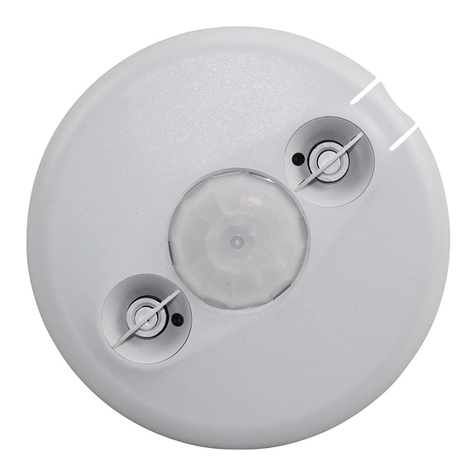
LEGRAND
LEGRAND Wattstopper DT-355 installation instructions
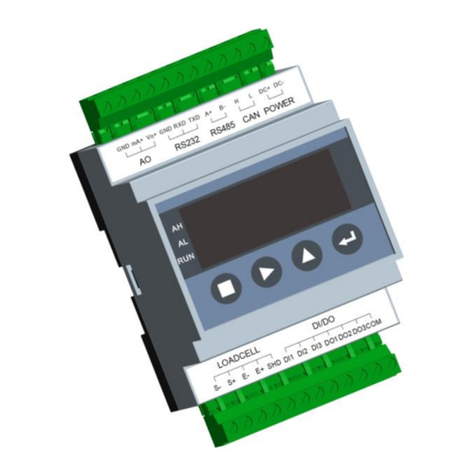
Supmeter
Supmeter BST106-M60S(L) Operation manual

Carefree
Carefree TRAVEL'RFIXED PITCH Service manual

Chauvet
Chauvet CH-765 user guide

PCB Piezotronics
PCB Piezotronics 209C12 Installation and operating manual

Lynteck
Lynteck ES73 quick start guide
